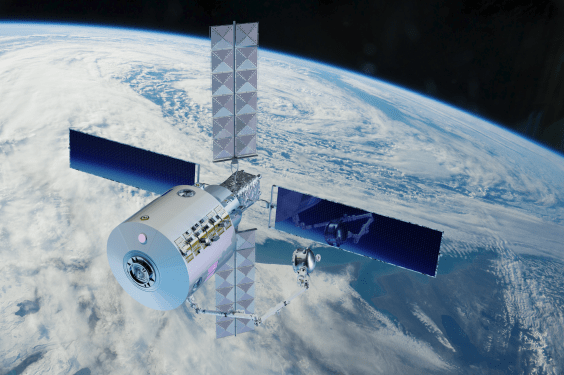
European Space Agency Signs Agreement With Starlab Developers for Ongoing Low Earth Orbit Access
The European Space Agency (ESA) has signed a new agreement with the developers of the Starlab commercial space station, marking a significant step towards establishing a sustained access to space for Europe. The memorandum of understanding (MOU) between ESA, Voyager Space and Airbus Defense and Space will focus on how ESA can utilize Starlab for astronaut missions and as a long-term research and commercial platform.
Background and Context
The International Space Station is currently slated to retire in 2030, marking the end of an era in space exploration. In response to this development, NASA decided to seed the development of privately-owned stations that it could utilize as an anchor tenant. This strategy aims to create a sustainable access to space for future missions.
Starlab: A Privately-Owned Space Station
In December 2021, NASA awarded over $400 million to three private station plans, including Voyager Space’s Starlab. The agreement with ESA is not entirely surprising, given that Starlab is a joint venture between Airbus and Voyager, which already has strong ties to Europe.
Key Highlights of the Agreement
- Astronaut Missions: The MOU will focus on how ESA can use Starlab for astronaut missions.
- Long-term Research and Commercial Platform: The agreement also explores the possibility of using Starlab as a long-term research and commercial platform.
- End-to-End Ecosystem: The groups will explore creating an end-to-end ecosystem that includes European cargo and crew capsules, similar to how SpaceX’s Dragon capsule provides astronaut and cargo transportation to and from the International Space Station.
Quotes and Statements
In a statement, the CEO of Airbus Defence and Space Mike Schoellhorn noted the long-standing relationship between ESA and Airbus:
"Our collaboration on this next-generation space station builds on a long and successful partnership between ESA and Airbus in developing and operating a wide range of crewed and uncrewed spacecraft."
Related News and Developments
- ESA’s New Initiative: ESA has announced a new initiative aimed at soliciting a cargo capsule from European companies, which could later be developed to transport crew.
- Starlab Development: Voyager Space is currently developing Starlab, with the goal of creating a privately-owned space station that can provide sustained access to space.
Conclusion
The agreement between ESA and Starlab developers marks an important step towards establishing a sustained access to space for Europe. The collaboration between public and private entities will help create a sustainable future in space exploration and development.
A Brief History of Space Exploration
Space exploration has come a long way since the first humans set foot on the moon in 1969. From the International Space Station to privately-owned stations like Starlab, the industry has seen significant advancements in recent years.
- International Space Station: The ISS is a habitable artificial satellite in low Earth orbit where astronauts and cosmonauts reside for extended periods.
- Privately-Owned Stations: Privately-owned stations like Starlab aim to provide sustained access to space for future missions.
The Importance of Sustained Access to Space
Sustained access to space is crucial for continued progress in space exploration and development. A privately-owned station like Starlab can provide a sustainable alternative to government-run and funded stations, paving the way for new technologies and innovations.
- Long-term Research and Commercial Platform: A privately-owned station like Starlab can serve as a long-term research and commercial platform.
- End-to-End Ecosystem: The creation of an end-to-end ecosystem that includes European cargo and crew capsules will provide a seamless experience for astronauts and cosmonauts.
The Role of Public-Private Partnerships
Public-private partnerships have played a significant role in the development of space exploration. Collaborations between governments, private companies, and research institutions have helped drive innovation and progress.
- ESA’s New Initiative: ESA’s new initiative aimed at soliciting a cargo capsule from European companies is an excellent example of public-private collaboration.
- Starlab Development: Voyager Space’s development of Starlab is another example of successful public-private partnerships in space exploration.
The Future of Space Exploration
As the industry continues to evolve, it’s essential to consider the future of space exploration. The creation of sustainable access to space will be crucial for continued progress.
- Long-term Research and Commercial Platform: A privately-owned station like Starlab can serve as a long-term research and commercial platform.
- End-to-End Ecosystem: The creation of an end-to-end ecosystem that includes European cargo and crew capsules will provide a seamless experience for astronauts and cosmonauts.













